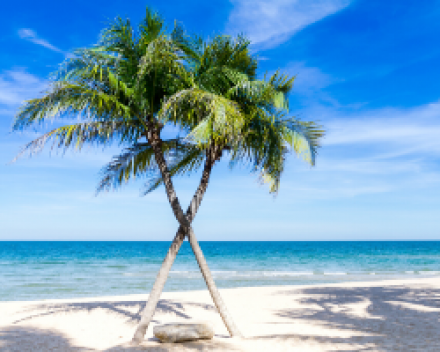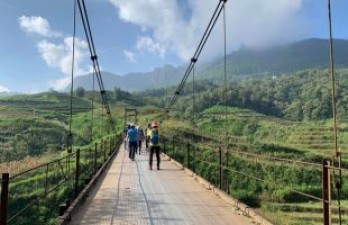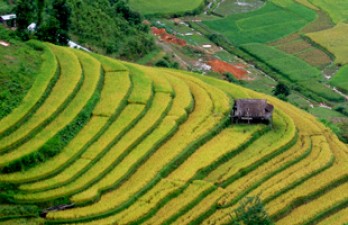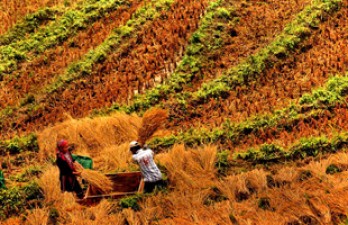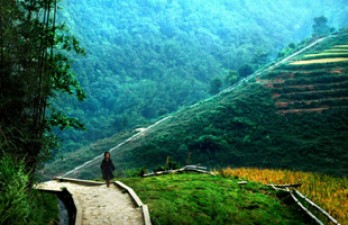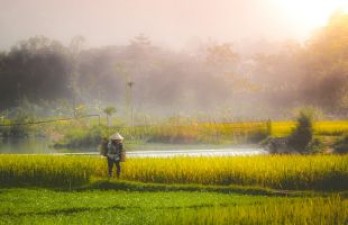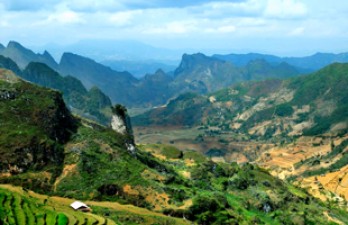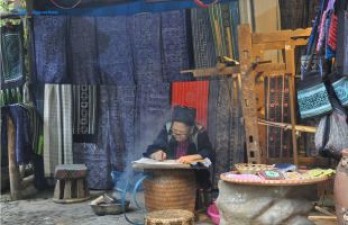Everything you should know before traveling to Sapa
2By Ha Vuong- A travel expert
Located in the northwest of Vietnam, Sapa is a famous hill station of Lao Cai province near the China border. This destination has been a popular destination for travelers both domestically and internationally for over a century. It's an amazing place that has everything a traveler is looking for: an amazing natural beauty with imposing mountains and green valleys, fascinating cultures and traditions of many hill tribes, and beautiful pleasant weather all year round.
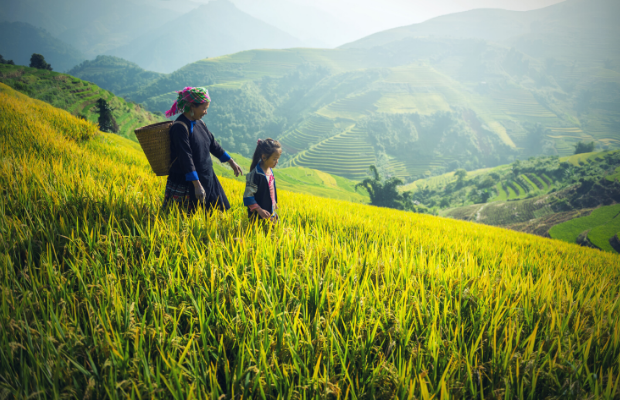
Sapa
Let's explore Sapa with Handspan Travel Indochina!
The foundation of Sapa
The name Sapa is derived from Mandarin Chinese. In Mandarin, SaPa or SaPá means "sandy beach" because in the past Sa Pa Town was a small sandy beach where indigenous people often gathered during their market days.
After capturing Sapa in 1887, the French colonialists expanded the area of Old Sapa into a hill station, especially for summer vacation. In 1915, the first two wooden villas were built by a French contractor. A very short time after that, many French-style villas were built making this place a popular summer destination in the entire Indochina for French officials. When it became a hill station, the French also set up the infrastructure. In 1925, they built the Cat Cat hydroelectric station. In 1930, they paved the road from Lao Cai to Sapa. A clean water supply system was also built to serve the town area. At the same time, a Sapa residential town was formed. Besides the Vietnamese people, there also were Chinese and French people living here.
Until 1943, Sapa had about 200 villas and houses. There were also many gardens, playgrounds, plantations as well as tourist attractions including Ham Rong Mountain, Hang Da Cave, Silver Waterfall, Cau May, etc. Nowadays, resorts and hotels from the French period no longer exist because most of them were destroyed during the border war with China in 1979.
Since 1954, Sapa has become a popular destination for domestic tourists but only until 1992, it has been opened to welcome international tourists.
Sapa town is 1,600 meters above sea level, 38 km from Lao Cai city, and 376 km from Hanoi. In addition to the main road from Lao Cai City, there is another transport route to Sapa, the National Highway 4D connects the border towns of Binh Lu, Tam Duong, and Lai Chau. Although the majority of Sapa residents are from ethnic minorities, the town is predominantly concentrated by Vietnamese people who rely on agriculture and tourism.
Tourists come to Sapa to enjoy not only the fresh air, and the simple tranquility of a mountainous area, but also to admire the wild beauty of Sapa's terraced fields, and waterfalls, or to discover the customs, and cultures of ethnic groups in the mountains such as H'Mong, Giay, Red Dao, Tay, Xa Pho, etc.
Hoang Lien National Park and Vietnam's highest peak: Fan Si Pan
Sapa’s highest peak is Fan Si Pan. It is 3,143m high and is also the highest mountain in Indochina on the Hoang Lien Son mountain range. The name Hoang Lien Son comes from the Hoang Lien tree, a plant that grows in this area and is used widely by local people as herbal medicine.
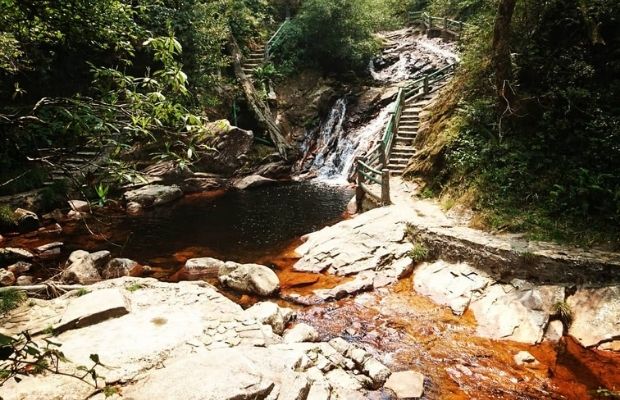
Hoang Lien National Park
Being one of the 33 National parks in Vietnam, Hoang Lien has diverse fauna and flora. The National Park has a large area covered by pine forests which is not common for the tropical climate of Vietnam. Hoang Lien Son National Park has 136 species of birds, 56 species of mammals, and 553 species of insects. There are 37 mammal species recorded in the "Vietnam Red Book". Hoang Lien Son Park has 864 species of plants, including 173 species of medicinal plants.
Sapa's locals
6 ethnic groups are living together in Sapa including Hmong, Dzao, Giay, Xa Pho, Tay, and Viet. Although they have a cultural influence on each other, each ethnic group still retains its own cultural identity, as well as the customs that have been maintained for many generations. Traditional festivals are maintained every year such as:
- Rice harvesting festival of the Giay people
- Dancing Festival of Dao people.
- Sweeping the Village festival of Xa Pho people
- Xuong Dong or the celebration of a new crop at Ban Ho village
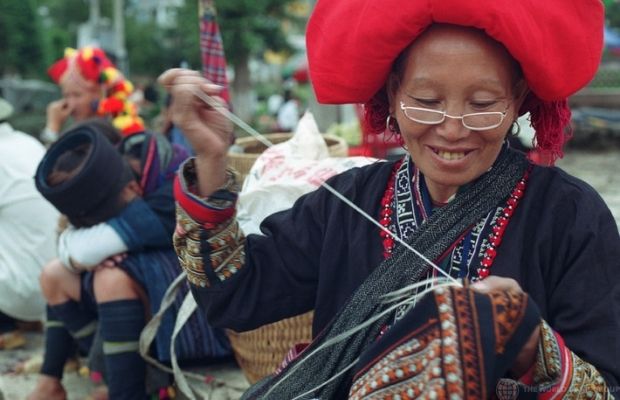
Dao people
Sapa' Attractions
Silver waterfall
About 6km from Sapa towards Tram Ton pass, the Silver waterfall is about 200 m high with rushing water to create impressive mountain sounds.
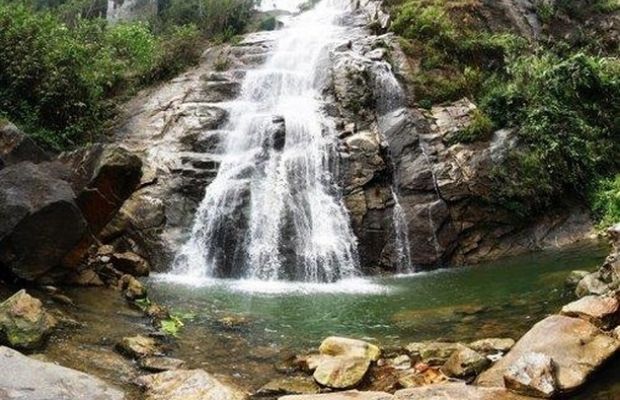
Silver Waterfall
Cau May- Rattan bridge
Cau May is an old bridge created by the locals to access their village crossing the river. The original bridge is gone however this is still one of the most-visited parts of Sapa because of its location in the beautiful Golden Stream Valley (Muong Hoa Valley).
Sapa Ancient Stone area
In Muong Hoa Valley, you can find 196 carved items covered with many strange figures of ancient inhabitants thousands of years ago. Until today many archaeologists have not yet deciphered their meanings. The ancient carvings area has been listed as the National Monument.
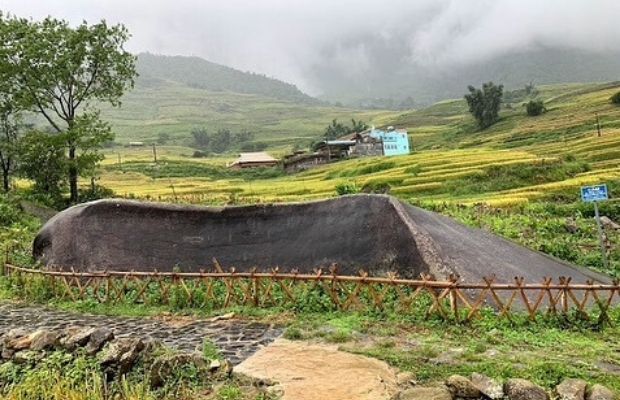
Sapa Ancient Stone Area
Ham Rong Mountain
Ham Rong Mountain is a garden on a mountain inside Sapa town. It's a small yet beautiful garden with nice walking paths and a few scenic viewpoints down to the town center. There's also an orchid garden available for visiting. There are two cultural dancing shows by the local artists from the villages around Sapa.
Sapa market
Sapa market is now available every day; however, it gets a lot busier on Sunday. A night before the market, local people travel to town and stay overnight. They gather together and sing folk songs or dance together. They often bring along their traditional instruments such as embouchure (lip instrument), bamboo flute, and bamboo saxophone to play. The activities are often happening near the market that’s why people called it a "love market".
Hilltribe villages in the valleys
Hilltribe villages in the valleys are the favorite spots for travelers to Sapa. They are the living places of local people in the villages with an incredible setting of nature. The villages are often located among the rice-terraced fields perched on the mountain slope. Trekking through these villages in Sapa while learning about the locals' fascinating culture is an amazing experience. Here is our list of 7 villages you must visit in Sapa.
Fansipan mountain
Fansipan Mountain is also known as the roof of Indochina. It is now reachable by cable cars. You can easily spend a long half day in this area wandering through parks and flower gardens.
For more attractions to visit in Sapa, here is your recommendation: The top 13 attractions in Sapa you should not miss.
How to get to Sapa
Sapa is 350 km far away from Hanoi and is around 40 km from Lao Cai city. Getting to Sapa now is very easy either by public transportation, tour buses, or private transportation.
From Lao Cai city, you can reach Sapa by road only. Public buses or private cars with drivers are readily available while some small other groups choose to rent motorbikes.
How to get to Lao Cai / Sapa from Hanoi?
With the distance of about 300km, from Hanoi to Lao Cai you can choose to go by train, regular public tour buses, or private transportation. Traveling by train to Sapa is still a popular mode of transportation.
From Hanoi Railway Station, it takes you 8 hours to Lao Cai Railway Station, which is about 35 kilometers from Sapa town’s center. There are day and night trains to get to Lao Cai; however, Handspan recommends you take the night trains for a faster journey as you will have fewer stops than taking the day train. You can choose the SP1 departing at 09.35 p.m., or the SP3 train departing at 10.00 p.m.
For more detailed information, please refer to our blog post here: A guide on traveling by train from Hanoi to Sapa.
Since the new Hanoi - Lao Cai highway is completed, getting to Sapa from Hanoi is a lot easier by road. The number of visitors choosing to travel by road increased a lot since it takes only 4 hours to get to Lao Cai from Hanoi. Many tourists choose to go by car because the time is much shorter (5 hours now compared with 8-10 hours before). Also, there are now many options for public buses that leave regularly from every bus station in the city. Many tour buses and luxury minivans depart from Hanoi Old Quarter to Sapa from early morning till noontime and from Sapa to Hanoi in the afternoon.
For more detailed information on how to get to Sapa from Hanoi, please visit our blog post here: Hanoi to Sapa.
How to get to Sapa from Lao Cai?
Lao Cai is about 40 km from Sapa and is about one-hour drive if not in traffic. Some cars from Hanoi go straight to Sapa, but some will stop in Lao Cai, and then they use smaller cars to transfer passengers to Sapa to ensure safety (due to Lao Cai - Sa Pa road being narrow, and steep).
If you bring a motorbike to Lao Cai and then go to Sa Pa, you should follow the 4D road uphill and it takes roughly one hour too. There are also back roads to Sapa that take you on the less frequented road with amazing scenery. This is also one of our popular day tours from Lao Cai to Sapa.
If you take the train, you will only get to Lao Cai station, then you should continue traveling 40 km more to reach Sapa town. For those who can afford it, renting a private car is the most convenient. However, for those who want to save money, you can choose to go by bus. At the outside gate of Lao Cai station, there is a bus stop. They sell bus tickets at a few dollars (equivalent to Vietnamese dong). And they also accept bulky luggage from visitors.
The bus departs from Lao Cai station square and ends at Sapa Church. They depart quite regularly every day, the earliest bus starts at around 5:30 a.m. to pick up the first groups from the train. This bus has some stops to pick up passengers at Lao Cai City and then runs straight to Sapa.
Where to stay in Sapa
Sapa is a very popular destination hence there is a choice for everyone in terms of accommodation ranging from luxury hotels and resorts to low-budget guesthouses and homestays in the villages. In recent years, there are also options for eco-lodges.
There are hundreds of hotels in Sapa which are invested with quality from 1 to 5 stars. The standard of hotel, location, and reputation will decide the rates. Let's refer to these hotels below.
Silkpath Resort- 5-star: One of the top luxury hotels in Sapa with very nice rooms with views and a great garden.
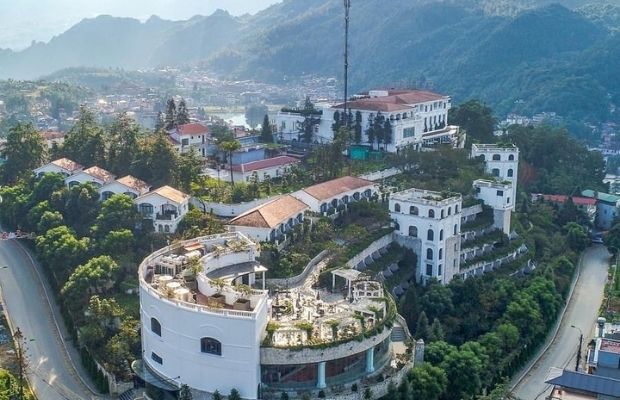
Silkpath Resort Sapa
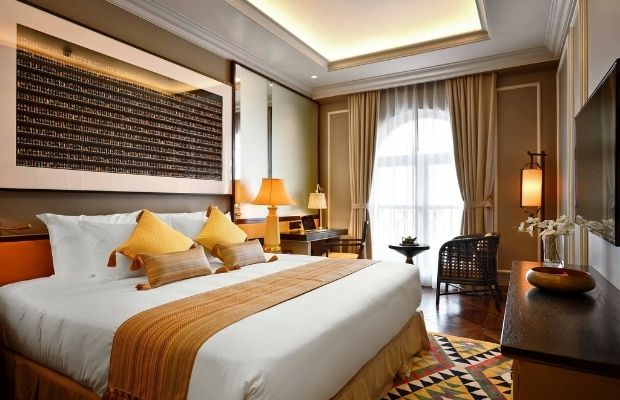
Silkpath Sapa's executive room
Chau Long Hotel- 4-star: standing on terraces on the side of the mountain, the stone and wooden construction of the hotel blends perfectly with the surrounding valley features of terraced rice paddies and blazing green fields and overlooking Vietnam’s highest peak – Mount Fan Si Pan.
Bamboo Hotel- 4-star: one of the first hotels in Sapa that is currently renovated (in 2020). The hotel is standing on the side of the mountain with good views. The rooms are nice and spacious. A plus for this hotel is the infinity pool overlooking Fan Si Pan Mountain.
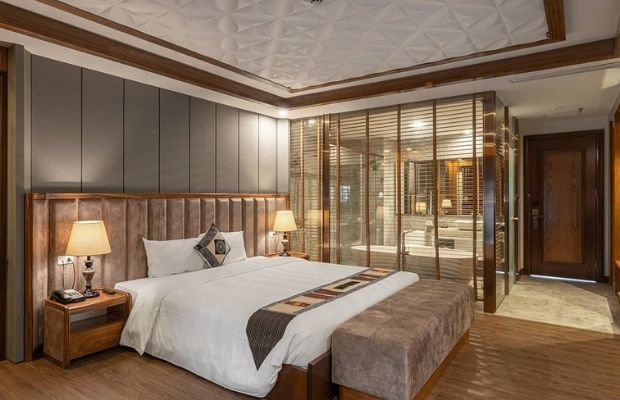
Deluxe Room Bamboo Sapa Hotel
Sapa Elegance Hotel- 2-star: located in the center of Sapa town, Elegance is a small charming local hotel with very spacious rooms and attentive service.
Topas Ecolodge: is a certified unique lodge by National Geographic and one of the most wanted accommodations in Sapa. The resort is located 15km away from Sapa Center on a hilltop with bungalows overlooking a magnificent valley. This is a very good example of sustainable tourism as they use eco-friendly materials for bungalow construction and provide jobs for local people from the villages nearby. The resort has one of the most impressive all-year-round infinity pools and jacuzzi in entire Vietnam with probably the best view you can find from a mountain resort.
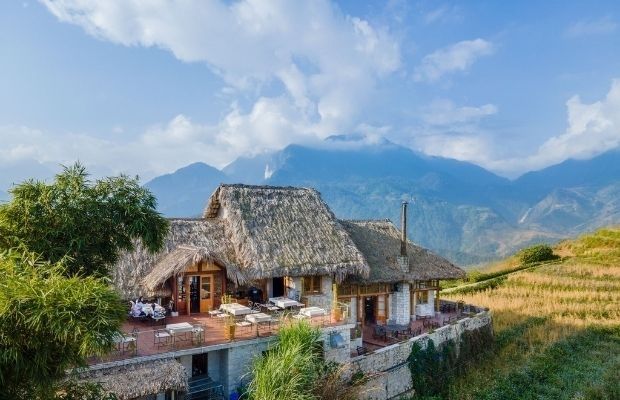
Topas Ecolodge
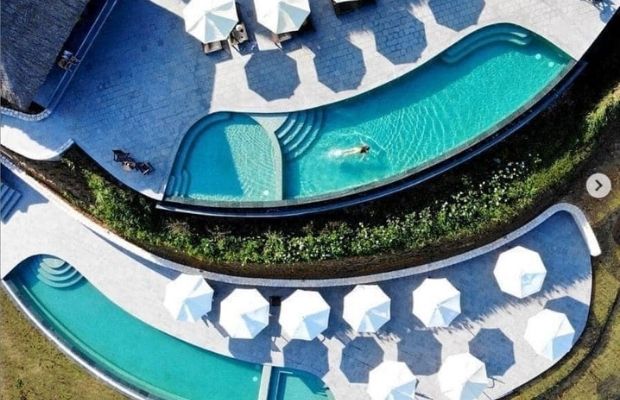
Infinity pool in Topas Ecolodge
Homestay in Sapa: Handspan has worked with communities from different villages since the beginning of tourism development in Sapa to provide a unique local experience for our guests. With the ‘Homestay’ experience, your overnight accommodation is provided by a local family in their traditional houses. There’s no private room and you’ll sometimes sleep on the floor (with a mattress) in a large communal area. The sleeping corner is set up with a single mattress (thin, but adequate), blankets (ditto), pillow, and mosquito net. The restroom is at the international standard and a few steps from the main house.
You can find one of our most popular trekking tours in Sapa here: Sapa Valley Trek and Village Stay.
The best time to visit Sapa
The best time to travel to Sapa is from September to November and from March to May. At this time, Sapa weather is stable, with sunny days, and cool nights.
April to May is the time when ethnic minorities transplant rice in terraced fields. And this is also the blooming season of many beautiful flowers. The scene of rice transplantation is very beautiful, the photo hunters like to go in this season and the ripe rice season.
September to October is the season of ripe rice, then all the views of Sapa are glowing. Around this time, Sapa seemed to put on a new color - yellow on all the hills. But it would be best if you went in the middle or late September, to October.
Summertime from June to August is also the rainy season but it's time when the rice paddies are in lush green.
December to February can be cold however this is also the bloom season of peach blossom.
In conclusion, you have just learned some detailed information before you travel to Sapa. For any assistance, please do not hesitate to contact our team.
__logo.png)
__hanoi-water-puppets.jpg)
__angkor-wat-blue-reflections.jpg)
__vientiane-buddha-park-monks.jpg)
__bagan-dhammayazika-dusk.jpg)
